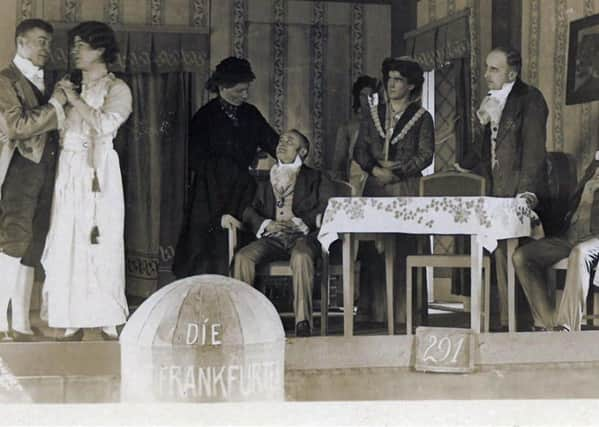Exhibition on First World War internment camps in Scotland


Running throughout 2018, it aims to raise awareness of life in internment camps in Britain and the Commonwealth.
One of highlights will be an internment information and research centre at Hawick, close to Stobs Camp, one of the world’s best preserved First World War internment camps.
Advertisement
Hide AdAdvertisement
Hide AdIt will also include a Lustspielabend comedy evening theatre show based on shows put on by prisoners, and performed by Edinburgh Napier University students.
The show will be performed in Edinburgh, Glasgow and Hawick in June and is based on an original programme for found in Hawick museum.
A travelling and online exhibition on the internment camp system in the Commonwealth, including English translations of German letters and newspapers detailing camp life, will tour the country,
Stobs became the HQ for the PoW camps in Scotland with scores of wooden huts enclosed within a barbed wire compound. The prisoners worked on the land and built a state-of-the-art sewage system for the camp, which housed around 4500 prisoners and another thousand guards and ancillary staff.
Dr Stefan Manz, head of language and translation at Aston University in Birmingham, said: “Conditions in the camps were relatively good and people generally treated humanely according to pre-war treaties.
“The letters sent home to Germany were censored but people were quite open about their depression. This was referred to as ‘barbed wire disease’ and stemmed from being locked away for four or five years.
“They had been living in Scotland and all of a sudden they were locked up, losing their jobs, their businesses eroding away, and worrying about their families.
“Despite all the humour involved, our project uncovers a dark chapter of Anglo-German relations. Germany also interned British citizens in return.
Advertisement
Hide AdAdvertisement
Hide Ad“The involvement of German project partners makes sure that we remember this chapter together as a joint experience, moving away from purely national remembrance.”
Dr Schwan, who leads on the music and theatre productions, said: “This project explores the human cost of war and imprisonment but also the positive interactions between internees and local residents. As we are currently faced with the challenges of Brexit and new debates about migration, such a re-examination of cross-cultural encounters is timely.”
The project is led by Edinburgh Napier University and Aston University, funded by the use Arts and Humanities Research Council.